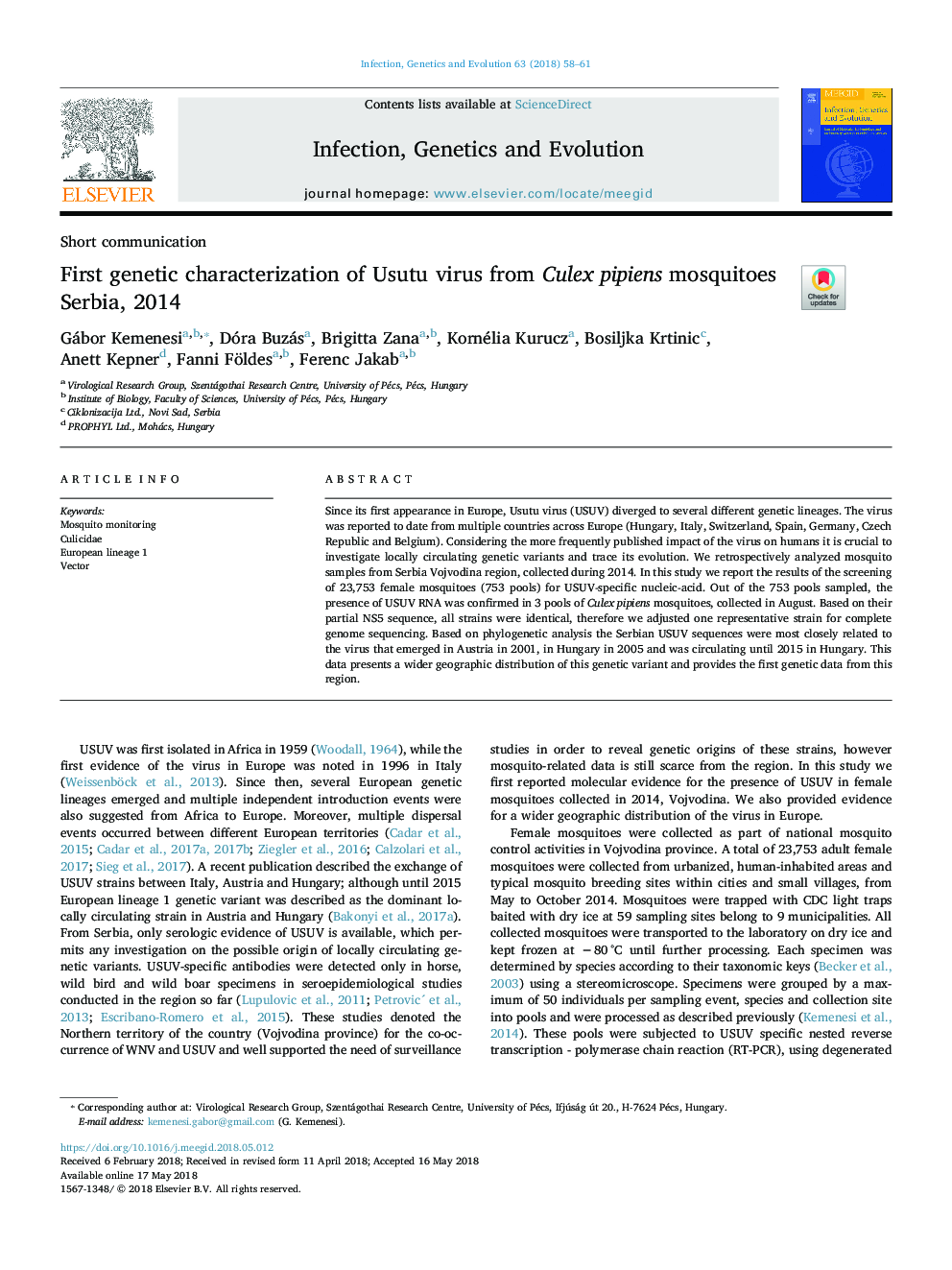| کد مقاله | کد نشریه | سال انتشار | مقاله انگلیسی | نسخه تمام متن |
|---|---|---|---|---|
| 8646666 | 1570140 | 2018 | 4 صفحه PDF | دانلود رایگان |
عنوان انگلیسی مقاله ISI
First genetic characterization of Usutu virus from Culex pipiens mosquitoes Serbia, 2014
دانلود مقاله + سفارش ترجمه
دانلود مقاله ISI انگلیسی
رایگان برای ایرانیان
کلمات کلیدی
موضوعات مرتبط
علوم زیستی و بیوفناوری
علوم کشاورزی و بیولوژیک
بوم شناسی، تکامل، رفتار و سامانه شناسی
پیش نمایش صفحه اول مقاله

چکیده انگلیسی
Since its first appearance in Europe, Usutu virus (USUV) diverged to several different genetic lineages. The virus was reported to date from multiple countries across Europe (Hungary, Italy, Switzerland, Spain, Germany, Czech Republic and Belgium). Considering the more frequently published impact of the virus on humans it is crucial to investigate locally circulating genetic variants and trace its evolution. We retrospectively analyzed mosquito samples from Serbia Vojvodina region, collected during 2014. In this study we report the results of the screening of 23,753 female mosquitoes (753 pools) for USUV-specific nucleic-acid. Out of the 753 pools sampled, the presence of USUV RNA was confirmed in 3 pools of Culex pipiens mosquitoes, collected in August. Based on their partial NS5 sequence, all strains were identical, therefore we adjusted one representative strain for complete genome sequencing. Based on phylogenetic analysis the Serbian USUV sequences were most closely related to the virus that emerged in Austria in 2001, in Hungary in 2005 and was circulating until 2015 in Hungary. This data presents a wider geographic distribution of this genetic variant and provides the first genetic data from this region.
ناشر
Database: Elsevier - ScienceDirect (ساینس دایرکت)
Journal: Infection, Genetics and Evolution - Volume 63, September 2018, Pages 58-61
Journal: Infection, Genetics and Evolution - Volume 63, September 2018, Pages 58-61
نویسندگان
Gábor Kemenesi, Dóra Buzás, Brigitta Zana, Kornélia Kurucz, Bosiljka Krtinic, Anett Kepner, Fanni Földes, Ferenc Jakab,